In the competitive landscape of electric vehicles (EVs), the BYD Dolphin and Hyundai Inster stand out as two intriguing options, catering to different segments of the market. As electric mobility continues to gain momentum, consumers are often torn between budget and performance-driven choices. Let's delve deeper into the technical specifications and innovations of these two models to help potential buyers make an informed decision.
BYD Dolphin vs Hyundai Inster – Performance, range & efficiency compared
Compare performance, boot capacity, efficiency and price at a glance.
Find out which car is the better choice for you – BYD Dolphin or Hyundai Inster?
Design and Body Type
The BYD Dolphin presents itself as a sleek and modern hatchback, ideal for urban environments and daily commutes. With a length of 4290 mm, width of 1770 mm, and a height of 1570 mm, its compact design facilitates easy maneuvering and parking. The car comfortably seats five passengers and offers a trunk capacity of 345 liters, making it a practical choice for small families or individuals needing extra cargo space.
On the other hand, the Hyundai Inster takes the form of an SUV, designed for those who prioritize space and versatility. Ranging from 3825 mm to 3845 mm in length, and with a width of 1610 mm, it provides a higher driving position with enhanced visibility. The Inster is more limited in seating capacity, accommodating four passengers, and has a trunk capacity ranging from 238 to 280 liters, depending on the battery variant selected.
Powertrain and Performance
The BYD Dolphin is powered by a robust electric motor generating up to 204 HP (150 kW) and torque of 310 Nm. This combination allows it to accelerate from 0 to 100 km/h in just 7 seconds, ensuring a lively and responsive driving experience. Notably, the Dolphin has an impressive electric range of 427 km on a single charge, making it suitable for both city driving and longer journeys with minimal range anxiety. Its efficient energy consumption of 15.9 kWh/100 km further enhances its appeal, supporting eco-friendly driving.
Contrastingly, the Hyundai Inster offers various power options, ranging from 97 HP (71 kW) to 115 HP (85 kW), depending on the chosen battery variant. While these figures fall short compared to the Dolphin, the Inster still provides respectable performance, with acceleration times between 10.6 and 11.7 seconds for 0-100 km/h. The electric range is commendable, ranging from 327 km to 370 km, depending on battery size. Its energy consumption varies slightly but remains efficient, falling between 14.3 and 15.1 kWh/100 km.
Innovations and Technology
Both vehicles incorporate innovative technologies aimed at enhancing the driving experience and safety. The BYD Dolphin's CO2 efficiency class is rated at an impressive "A," representing its commitment to sustainability. It features a reduction gearbox that contributes to its smooth and quiet operation, characteristic of electric vehicles.
The Hyundai Inster, while not as powerful, integrates its own set of technologies focused on comfort and connectivity. Mindful of urban mobility needs, the Inster is equipped with the latest driver-assistance features, balanced with a user-friendly infotainment system. Its compact SUV build allows it to handle various road conditions with ease, making it a versatile choice for diverse driving environments.
Conclusion: Which One to Choose?
Choosing between the BYD Dolphin and the Hyundai Inster ultimately boils down to personal preference and specific driving needs. The Dolphin's higher power output, superior range, and spacious interior may appeal more to families or individuals who prioritize performance and reliability during commutes or longer trips.
Conversely, the Hyundai Inster's SUV design, combined with its accessible price point and variety of battery options, makes it an attractive choice for city dwellers or those seeking a compact vehicle without the need for extreme performance.
As the electric vehicle market evolves, both the BYD Dolphin and Hyundai Inster offer unique advantages, each catering to distinct consumer needs while promoting eco-friendly driving solutions.
Here’s where it gets real: The technical differences in detail
Costs and Efficiency:
When it comes to price and running costs, the biggest differences usually appear. This is often where you see which car fits your budget better in the long run.
Hyundai Inster has a significantly advantage in terms of price – it starts at 20500 £, while the BYD Dolphin costs 29700 £. That’s a price difference of around 9206 £.
In terms of energy consumption, the advantage goes to the Hyundai Inster: with 14.30 kWh per 100 km, it’s somewhat more efficient than the BYD Dolphin with 15.90 kWh. That’s a difference of about 1.60 kWh.
As for range, the BYD Dolphin performs to a small extent better – achieving up to 427 km, about 57 km more than the Hyundai Inster.
Engine and Performance:
Power, torque and acceleration are the classic benchmarks for car enthusiasts – and here, some clear differences start to show.
When it comes to engine power, the BYD Dolphin has a decisively edge – offering 204 HP compared to 115 HP. That’s roughly 89 HP more horsepower.
In acceleration from 0 to 100 km/h, the BYD Dolphin is significantly quicker – completing the sprint in 7 s, while the Hyundai Inster takes 10.60 s. That’s about 3.60 s faster.
In terms of top speed, the BYD Dolphin performs slight better – reaching 160 km/h, while the Hyundai Inster tops out at 150 km/h. The difference is around 10 km/h.
There’s also a difference in torque: BYD Dolphin pulls decisively stronger with 310 Nm compared to 147 Nm. That’s about 163 Nm difference.
Space and Everyday Use:
Whether family car or daily driver – which one offers more room, flexibility and comfort?
Seats: BYD Dolphin offers to a small extent more seating capacity – 5 vs 4.
In curb weight, Hyundai Inster is distinct lighter – 1380 kg compared to 1658 kg. The difference is around 278 kg.
In terms of boot space, the BYD Dolphin offers to a small extent more room – 345 L compared to 280 L. That’s a difference of about 65 L.
In maximum load capacity, the BYD Dolphin performs somewhat better – up to 1310 L, which is about 251 L more than the Hyundai Inster.
When it comes to payload, BYD Dolphin somewhat takes the win – 410 kg compared to 357 kg. That’s a difference of about 53 kg.
Who comes out on top?
Overall, the BYD Dolphin shows itself to be dominates this comparison and secures the title of DriveDuel Champion.
It convinces with the more balanced overall package and proves to be the more versatile choice for everyday use.
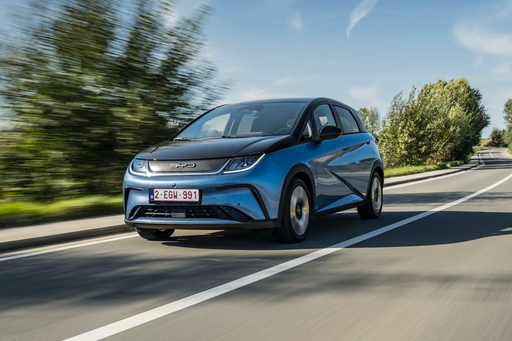
BYD Dolphin
BYD Dolphin
The BYD Dolphin is making waves in the automotive world with its sleek design and environmentally friendly features. This compact electric vehicle has been designed to offer a comfortable and efficient driving experience for urban commuters. With a focus on sustainability and high-tech innovation, the BYD Dolphin is setting new standards for modern city cars.
details @ press.bydauto.be
@ press.bydauto.be
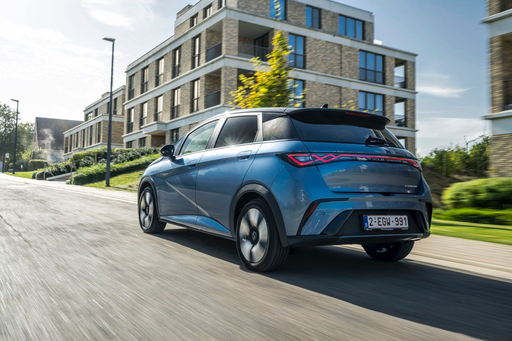 @ press.bydauto.be
@ press.bydauto.be
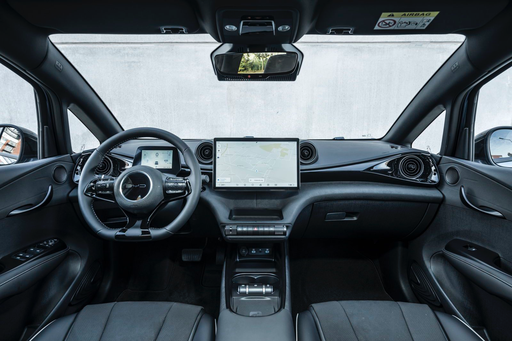 @ press.bydauto.be
@ press.bydauto.be
Hyundai Inster
The Inster has quickly captured the attention of automotive enthusiasts with its striking design and dynamic performance. This model seamlessly blends advanced technology with comfort, making it an ideal choice for both daily commutes and adventurous road trips. With its spacious interior and innovative features, the Inster promises an exhilarating driving experience that doesn’t compromise on practicality.
details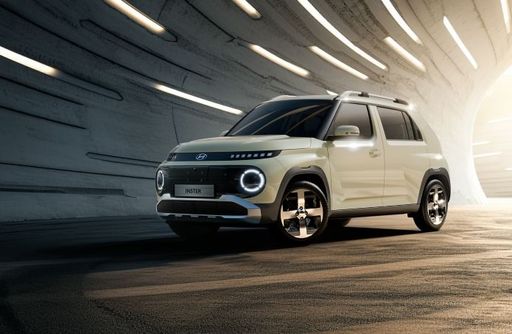 @ hyundai.news
@ hyundai.news
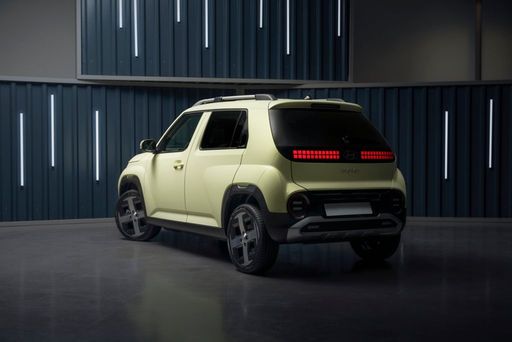 @ hyundai.news
@ hyundai.news
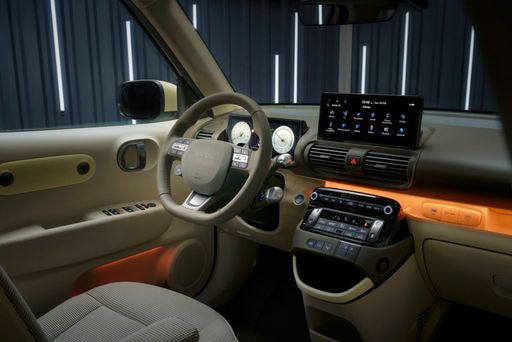 @ hyundai.news
@ hyundai.news

|

|
|
|
|
Costs and Consumption |
|
|---|---|
|
Price
29700 - 31400 £
|
Price
20500 - 25800 £
|
|
Consumption L/100km
-
|
Consumption L/100km
-
|
|
Consumption kWh/100km
15.90 kWh
|
Consumption kWh/100km
14.3 - 15.1 kWh
|
|
Electric Range
427 km
|
Electric Range
327 - 370 km
|
|
Battery Capacity
-
|
Battery Capacity
42 - 49 kWh
|
|
co2
0 g/km
|
co2
0 g/km
|
|
Fuel tank capacity
-
|
Fuel tank capacity
-
|
Dimensions and Body |
|
|---|---|
|
Body Type
Hatchback
|
Body Type
SUV
|
|
Seats
5
|
Seats
4
|
|
Doors
5
|
Doors
5
|
|
Curb weight
1658 kg
|
Curb weight
1380 - 1433 kg
|
|
Trunk capacity
345 L
|
Trunk capacity
238 - 280 L
|
|
Length
4290 mm
|
Length
3825 - 3845 mm
|
|
Width
1770 mm
|
Width
1610 mm
|
|
Height
1570 mm
|
Height
1575 - 1610 mm
|
|
Max trunk capacity
1310 L
|
Max trunk capacity
1059 L
|
|
Payload
410 kg
|
Payload
317 - 357 kg
|
Engine and Performance |
|
|---|---|
|
Engine Type
Electric
|
Engine Type
Electric
|
|
Transmission
Automatic
|
Transmission
Automatic
|
|
Transmission Detail
Reduction Gearbox
|
Transmission Detail
Reduction Gearbox
|
|
Drive Type
Front-Wheel Drive
|
Drive Type
Front-Wheel Drive
|
|
Power HP
204 HP
|
Power HP
97 - 115 HP
|
|
Acceleration 0-100km/h
7 s
|
Acceleration 0-100km/h
10.6 - 11.7 s
|
|
Max Speed
160 km/h
|
Max Speed
140 - 150 km/h
|
|
Torque
310 Nm
|
Torque
147 Nm
|
|
Number of Cylinders
-
|
Number of Cylinders
-
|
|
Power kW
150 kW
|
Power kW
71 - 85 kW
|
|
Engine capacity
-
|
Engine capacity
-
|
General |
|
|---|---|
|
Model Year
2023
|
Model Year
2025
|
|
CO2 Efficiency Class
A
|
CO2 Efficiency Class
A
|
|
Brand
BYD
|
Brand
Hyundai
|
What drivetrain options does the BYD Dolphin have?
The BYD Dolphin is offered with Front-Wheel Drive.
The prices and data displayed are estimates based on German list prices and may vary by country. This information is not legally binding.
